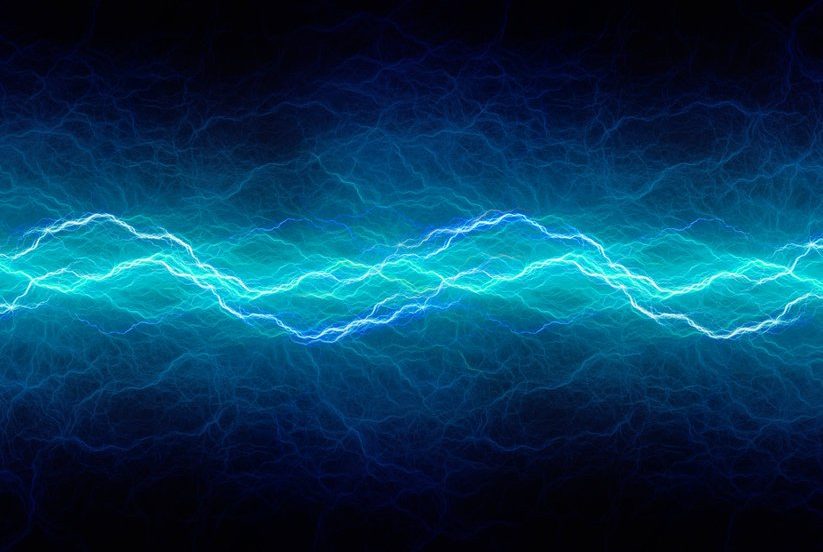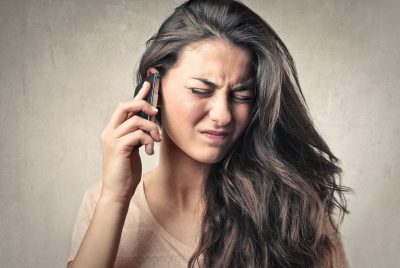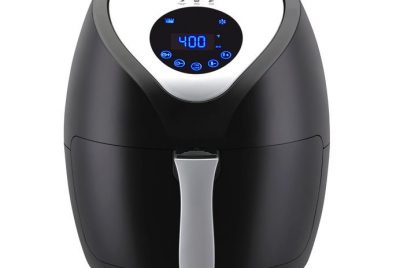On April 3, 1973, the first mobile phone was created. Since then, cell phone technology has…
What is Dirty Electricity and Can It Affect Your Health?

*We may earn a commission for purchases made using our links. Please see our disclosure to learn more.
You may have heard the phrase “dirty electricity” before and wondered what, exactly, it meant. How can electricity be dirty? And, perhaps most importantly, is this type of electricity dangerous? What effect can it have on your health?
Dirty electricity, it turns out, is present in most homes. What’s less clear is the impact that it can have on your family’s well-being. The best you can do is familiarize yourself with the research on both sides and decide what you think from there. And that is the purpose of this guide. First, we will touch on just what dirty electricity is. Then, we will dive into the existing research. We will also discuss sources of dirty electricity throughout your home, measuring its presence, and how to reduce your exposure.
Dirty electricity
Dirty electricity simply refers to excess electricity running through electrical wiring. It is essentially an electromagnetic field that is produced when, say, an appliance doesn’t need all the energy that is sent to it in order to run, or when the 60 Hz AC power used in your home is converted to DC energy. In these scenarios, the extra, unused electricity is sent back into the home’s wiring.
The electromagnetic field produced when this occurs is actually a form of EMF radiation. It falls under the Extremely Low Frequency (ELF) EMF side of the spectrum. ELF-EMF radiation frequencies range from 1 Hz to 300 Hz, and it is usually easily detected by an EMF meter. With dirty electricity, however, an EMF meter is actually not the best measurement tool. We’ll get into what is a little later.
What does the research say?
There are several studies out there regarding dirty electricity. Let’s take a look at some of the more compelling ones.
For starters, consider the work of Dr. Samuel Milham. In his book, Dirty Electricity, Dr. Milham examined the link between the rise of electricity in our homes and its correlation to various diseases, including diabetes, heart disease, and cancer. He found that, in the early 1900s, in rural areas without electricity, the rates of these health issues were lower than in rural areas with electricity. That, he concluded, was evidence of the negative health impacts of dirty electricity.
Dr. Milham is not the only researcher to take an interest in the field of dirty electricity. Dr. Richard Lear, for example, noted that the rates of many chronic health conditions have risen exponentially between 1990 and 2015. In 2019, he released Dirty Electricity: Invisible Role in the US Health Crisis. He proposed that at least some of this increase in disease was due to our ever-increasing exposure to electromagnetic radiation– specifically, dirty electricity. Some of the conditions he found to be affected include cancer, anxiety, depression, diabetes, multiple sclerosis, insomnia, and ADHD.
Dr. Lear came to those conclusions based on a review of the existing scientific literature. While the results of his study are quite interesting, it’s also important to note that it is currently in the pre-print phase, which means it has not been extensively peer-reviewed. Also worth noting is the fact that Dr. Lear co-founded Greenwave, Inc, one of the major manufacturers of dirty electricity filters.
Another 2019 study, performed by multiple researchers and printed in the journal Cognitive Neurodynamics, examined the link between dirty electricity and multiple sclerosis (MS), specifically. They found that, in their sample group, those who spent more time in close proximity with their cell phone or laptop (including sleeping with the device under their pillow,) were more likely to have MS. The researchers concluded that prolonged and continuous exposure to dirty electricity may increase the likelihood that a person develops MS as an adult.
Humans aren’t the only ones affected by dirty electricity, either. One 2018 study by international researchers looked at how exposure to these fields may impact cows. Interestingly enough, they found that when low-frequency electromagnetic fields (such as the type produced by dirty electricity,) were introduced to the environment, the cows were actually startled. They could somehow detect the presence of these fields.
Common sources of dirty electricity
Dirty electricity is produced by devices throughout your home. Energy-efficient appliances and gadgets are one major culprit. If your outlet provides 60 Hz of electricity but an item only requires 10 Hz in order to operate, for example, that excess electricity is going right back into your home’s wiring. Likewise, if your device requires intense bursts of electricity at regular intervals, it will also result in the creation of dirty electricity. Newer televisions are one example of a device that does this.
If your home has a dimmer switch, or if you use self-dimming smart bulbs, you may also be contributing to your home’s dirty electricity levels. When you dim your bulb, it does not require the full amount of electricity present in order to operate. So, you guessed it, that electricity goes back into your home’s wiring as dirty electricity.
Your computer, WiFi router, and wireless devices may also be a significant source of dirty electricity in your home. That is again because these items require different amounts of electricity than what is present in your home’s wiring.
Your home’s lighting matters, too. CFL bulbs, for example, are known to convert the AC electricity provided by an outlet first into DC energy and then into a higher-frequency version of AC energy. This process, as you may be able to imagine by now, does create some dirty electricity.
If you use solar energy in your home, you may also be causing a spike in dirty electricity levels. The solar panels themselves are pretty safe, but it’s the inverter that is the problem. You see, your solar panels produce DC energy from sunlight. In order to be used by devices in your home, it must be converted to standard AC energy, which is the job of the inverter. This transition results in dirty electricity.
Smart meters are another potential culprit, which is unfortunate because, in many instances, a homeowner does not have a whole lot of control over whether or not their city uses this type of meter. If yours does, however, there is a good chance that your meter is increasing your home’s dirty electricity levels.
This list is by no means exhaustive. There are other potential sources of dirty electricity out there, but this gives you a good idea of what types of devices and processes create it.
Measuring levels in your home
As we mentioned earlier, an EMF meter is actually not the best tool for the job if you’re trying to measure dirty electricity in your home. Rather, a dirty electricity meter is the way to go.
These meters plug into an electrical outlet. Once plugged in, a measurement will appear on the screen. This number indicates the level of dirty electricity present in that particular circuit. To measure your home’s dirty electricity levels, you must take a measurement on each circuit. There are multiple brands that make dirty electricity meters, including those who already manufacture filters. Stetzerizer, for example, has its Microsurge Meter, while Greenwave (Dr. Lear’s company,) has its own Broadband EMI Dirty Electricity Meter.
Measuring your home’s levels is a good idea because it gives you an idea of what circuits have the most dirty electricity present. From there, you can begin to make changes around the house to lower your exposure.
Lowering your exposure
If, after measuring your home’s dirty electricity levels, you find that the ranges are falling outside of your comfort zone, there are a few things you can do.
Dirty electricity filters
The first, and perhaps easiest, solution, is to install a dirty electricity filter. Most filters require you to install one on each circuit of your home, although installation is as simple as plugging the filter into one of that circuit’s wall outlets. There are also filters out there that can be installed by your home’s circuit breaker that actually filter out dirty electricity across all of your home’s circuits.
One filter worth considering is by manufacturer Satic. Their Pure Power Plug-In filter plugs easily into your wall and protects against dirty electricity on that circuit. We cover this filter in greater depth, as well as a few others, in The Top 5 Dirty Electricity Filters.
Switch to incandescent bulbs
Earlier, we talked about how CFL bulbs convert AC power to DC, and then back to AC again, albeit at a higher frequency. To reduce your home’s dirty electricity levels, consider switching to a bulb style that does not require this conversion to take place. Most other bulbs fit the bill, but if you’re looking for the safest option out there, we usually recommend old-fashioned incandescent bulbs.
Unplug
Odds are, you don’t want to ditch the modern appliances in your home in favor of older-style, less energy-efficient ones. These devices save money on your electricity bill, and they’re generally more environmentally-friendly than their older counterparts. But they do generate dirty electricity, and that’s a problem. To get around this, try unplugging non-essential devices when they are not in use. Obviously, this wouldn’t work for something like a refrigerator that needs to run constantly, but for your TV, coffee pot, and other similar items, try unplugging them in between uses. This allows you to continue using the devices while still lowering your home’s dirty electricity levels.
Final thoughts
There is a good chance that dirty electricity is present in your home. If, after examining some of the existing research, you decide that is cause for concern, take comfort in the fact that there are things you can do to lower your home’s levels.



